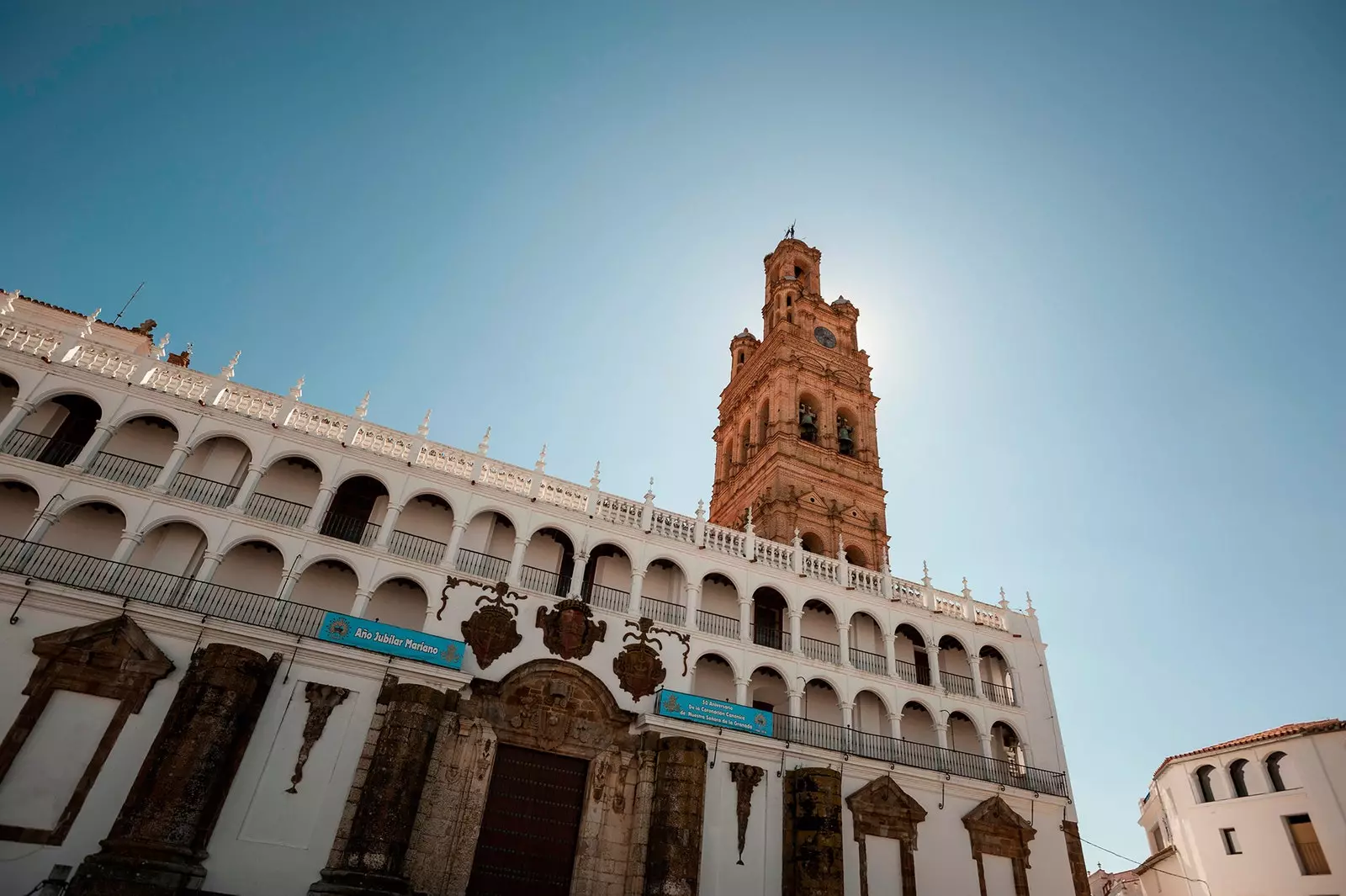
Church of Our Lady of Granada, in Llerena
In the southeast of the province of Badajoz , bordering with Córdoba and Seville, the region of Llerena (in the community of Campiña Sur) has Extremaduran and Andalusian airs, absorbing the best of both lands.
Its origins in Badajoz are betrayed by the beautiful meadows where the Iberian pig grazes peacefully, enjoying every moment of his reign in a land that the morning mist turns into a mysterious wasteland, while the midday sun rips the most mesmerizing colors out of it.
Along with the holm oaks and cork oaks, the valleys of Llerena hide ancient Roman mines and unknown hermitages brimming with art, while a small town of whitewashed houses seems to be dozing after having been, between the 14th and 17th centuries, a great religious, political and economic center.
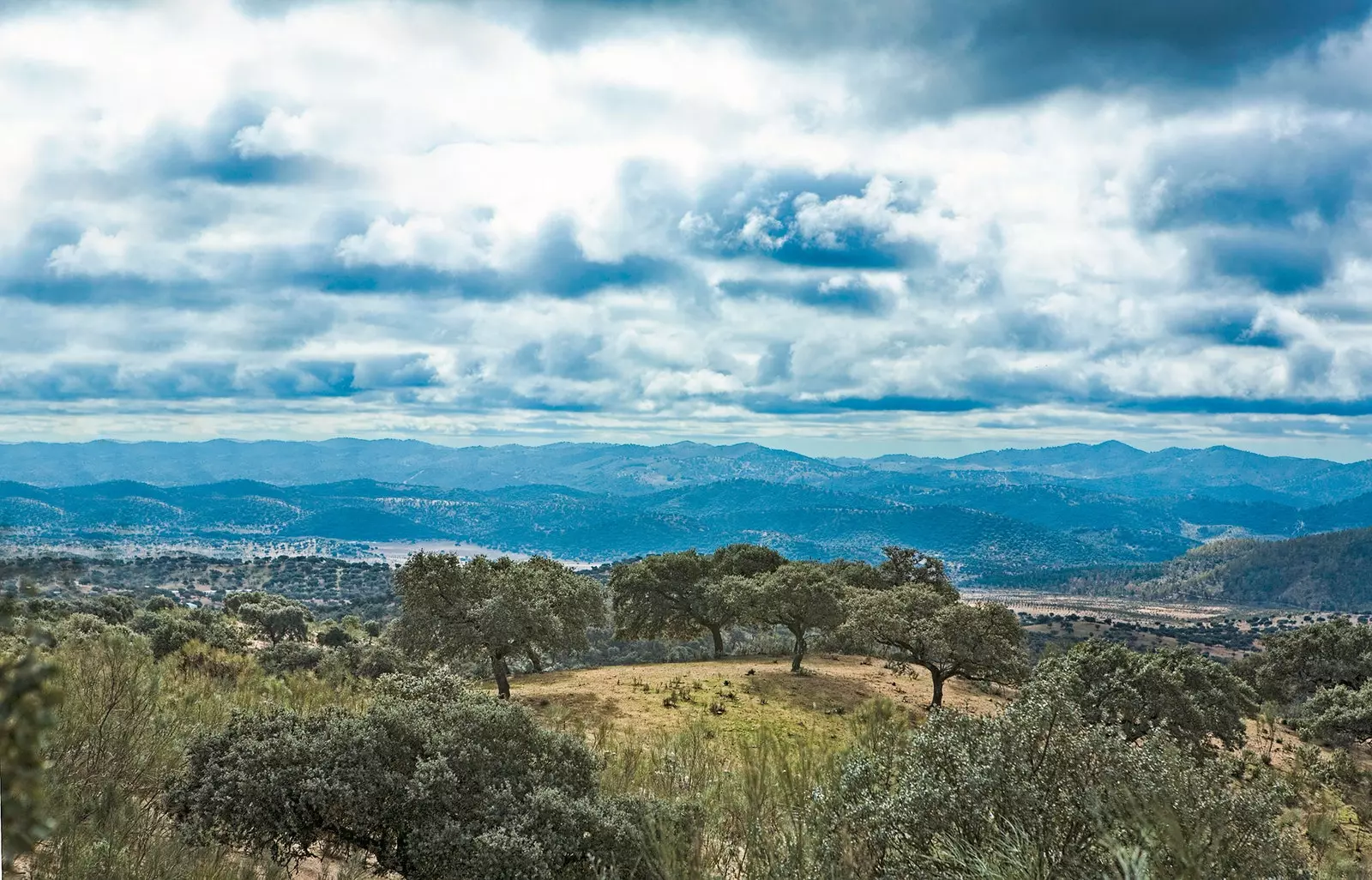
Old mines, meadows, hermitages overflowing with art...
LLERENA, MEMORIES OF THE SPLENDOR OF THE SPANISH GOLDEN AGE
that city is Full. Walking today through the quiet cobbled streets of the historic center of the city, it is hard to guess the feverish activity that it had centuries ago. The somewhat less than 6,000 inhabitants of Llerena try to show the traveller, through its immense and careful patrimonial and monumental legacy, the past greatness of a population that could boast of being the most important nucleus of power in Extremadura, only behind Badajoz.
The trigger for Llerena's development was her election as habitual place of residence of the Grand Masters of the Order of Santiago. This religious and military order emerged in the middle of the 12th century in Cáceres, and would reach its full power in the 16th century, only to disappear in 1873.
With the Order of Santiago, more than a dozen religious orders they began to build countless churches, convents and episcopal palaces.
During the golden age of the city, artists of the stature of the painter Francisco de Zurbarán or the sculptor Juan Martinez Montañés they lived here while doing work for religious and nobles.
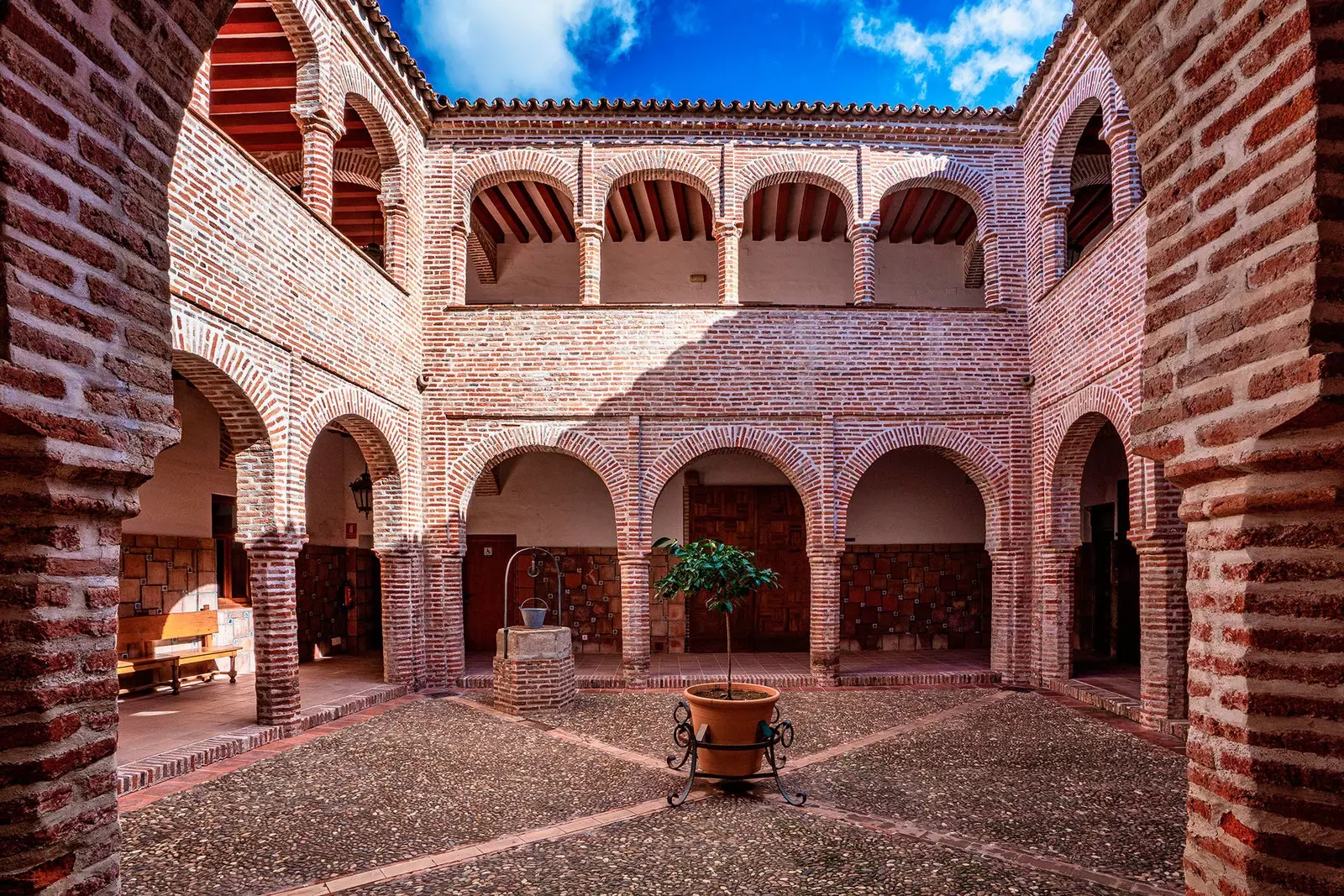
Zapata Palace, in Llerena
A good starting point to get to know the vast patrimonial wealth of Llerena – whose historic center was declared a Historic-Artistic Site in 1966 - is his Spain Square. The beautiful tower of the church of Our Lady of Granada, built between the 14th and 18th centuries, and which still retains its Gothic-Mudejar beauty reflected in the first sections of the tower and in chapels such as those of San Juan Bautista and Los Zapata.
The square, which had the functions of bullfighting arena, market and place of celebration of festivities, It is porticoed and its Mudejar style reminds us that Muslims and Jews also left their mark here who lived in peace with the Christians for many years.
Another of the most emblematic religious buildings in Llerena is the parish of Santiago Apostol, started to build by order of Don Alonso de Cardenas (last Grand Master of the Order of Santiago) before his sudden death.
From the early sixteenth century is the convent of Santa Clara, the only one, of the eight convents that existed in Llerena, that still It fully preserves both its function and its original structure.
She is especially pretty the public library of the city, housed in the old chapel of the Hospital of San Juan de Dios (XVIII). Under the floor that supports the shelves, ancient crypts keep human skeletons and skulls that can be observed through a glass.
The Jesuit College, the Zapata Palace and the Maestral Palace are other of the many monuments to visit in a Llerena that is full of them.
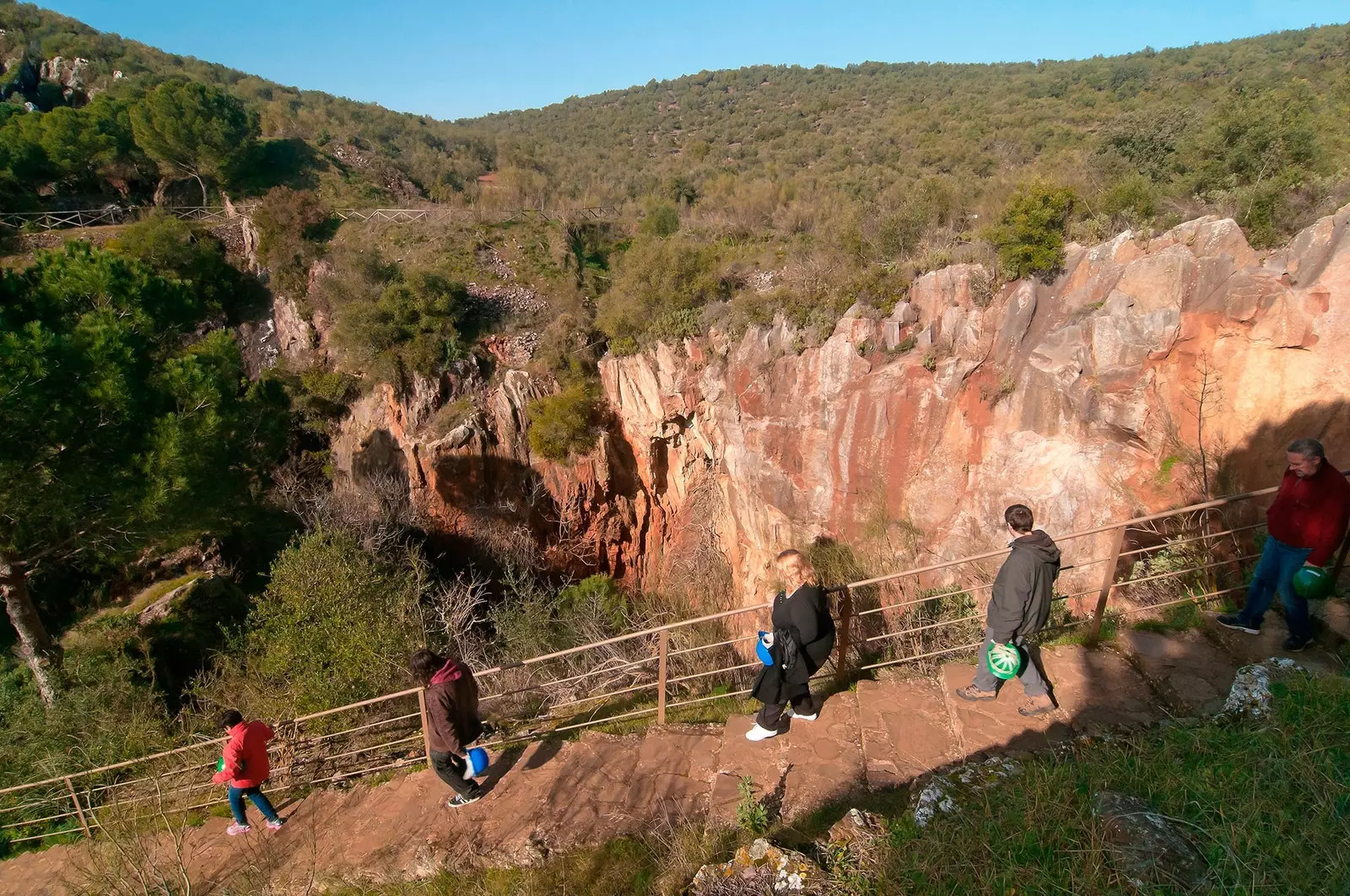
The old La Jayona iron mine
SAVING EXTREME IBERIAN HAM
But since not everything is listening to the call of history and monuments, gastronomy also finds its place of honor in the region of Llerena.
And it is that Some of the best hams in the world are made here. And it is not an exaggeration, because the hams of the family business Ham and Health , located on the outskirts of Llerena, had the honor of receiving the Golden Spike award for the best Iberian acorn-fed ham with D. O. Extremadura. An award that designates, for practical purposes, the best ham in the world.
Can be done A guided tour to the facilities of Jamón y Salud, in which they explain everything the elaboration process of this tasty product.
Another fun and exciting way to get to know an essential part of the world of Iberian ham is touring the meadows of the region at the wheel of a buggy. These all-terrain vehicles move with ease through the meadows, slopes and rocky paths of the kingdom of the Iberian pig. The company Xtreme Buggy organizes different routes through the area.
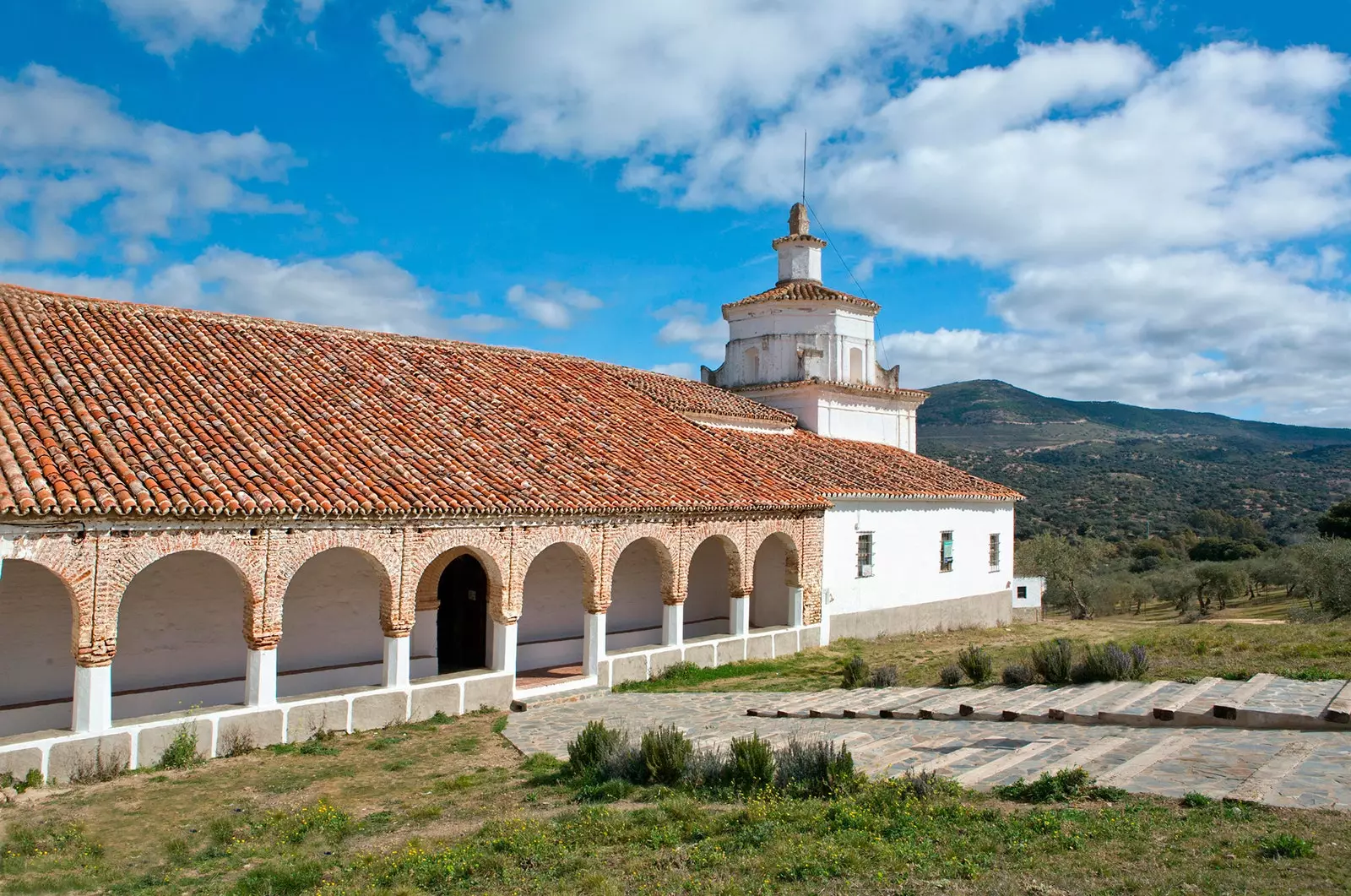
Exterior of the hermitage of Nuestra Señora del Ara
LA JAYONA, FROM IRON MINE TO NATURAL ORCHARD
Like the meadows, too the mountains of La Jayona, Located in the small town of Arch Fountain, offers an impressive natural beauty.
However, in one part of it, the typical green of the Mediterranean vegetation and crop fields alternate with strange reddish tones. are the remains of the old La Jayona iron mine.
Although it is thought that mining in the mountains began during the time of Roman domination, the truth is that reached its zenith in the first quarter of the last century. Only three years after the end of the First World War (war that meant an economic boom for the business), the mine, in which almost 500 miners (including women and children) came to work, closed its doors.
Since then, nature has been retaking the land that man took from it by force, and trees and bushes have invaded the different cavities that remain carved into the rock, like scars that recall the old and bleeding wounds of the mountain.
some of those ancient tunnels can be explored with a guided tour in which the history of the place is told. In it, visitors enter the entrails of the mine through a huge tunnel 700 meters long and 50 meters deep, being able to go through four of the eleven levels that the farm had.
The cave surprises at every step, combining dark and humid sections and their strange mineral formations adhered to the walls with other bright ones in which vegetation grows here and there, taking over the walls and cracking the ancient rock with its roots.
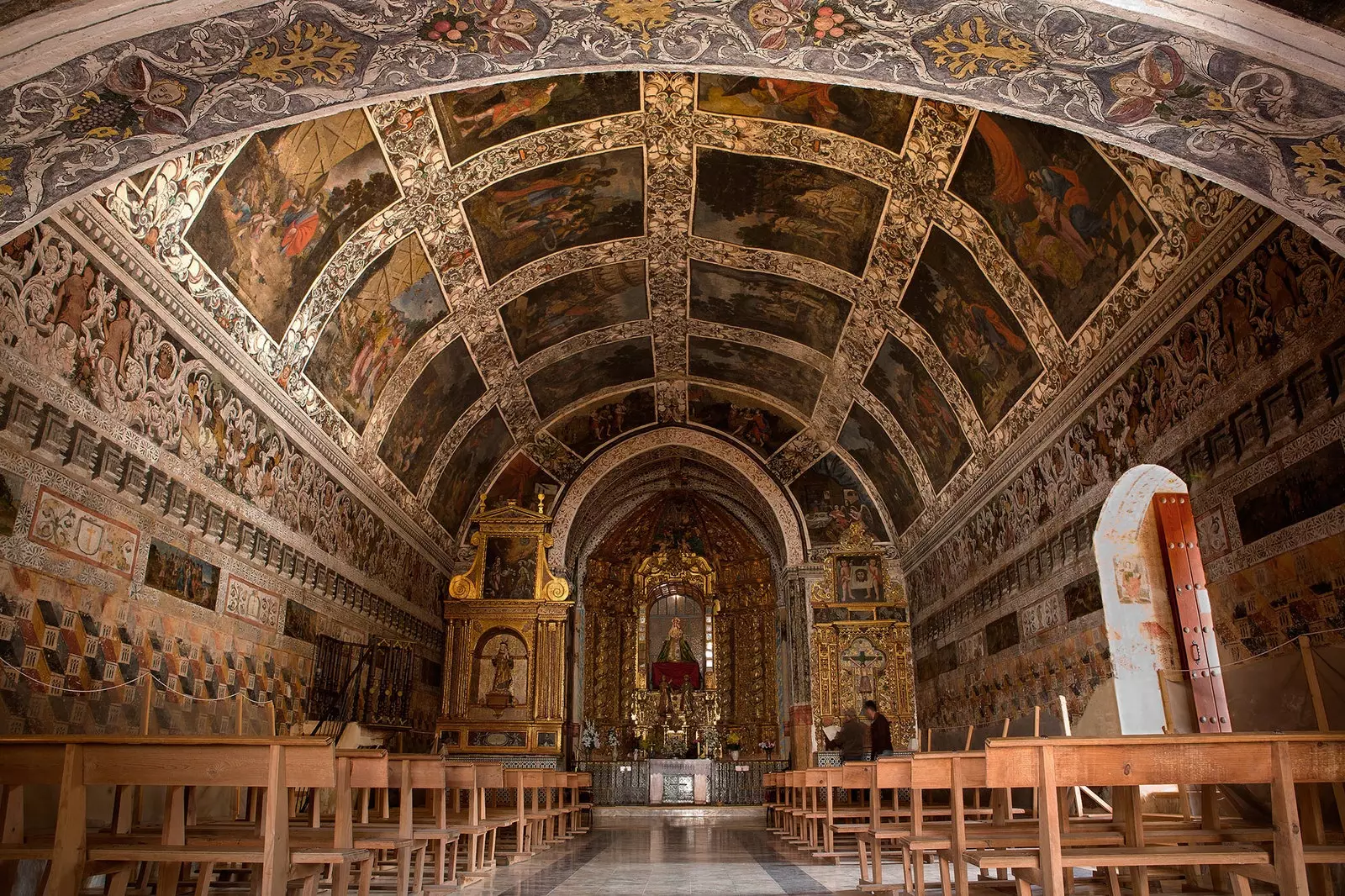
The Sistine Chapel of Extremadura
HERMITAGE OF NUESTRA SEÑORA DEL ARA, THE SISTINE CHAPEL OF EXTREMEÑA
Near the green beauty of the rehabilitated Sierra de la Jayona, surrounded by nature and ancient Roman remains, is the humble hermitage of Nuestra Señora del Ara, built at the end of the 15th century.
At least humble seems his exterior, being a building consisting of a single nave and whose whitewashed walls show little embellishment past a Mudejar-style arcade. The remains of a winery, two old dwelling houses (where the pilgrims and the santero stayed) and a 16th century oil mill complete the complex.
However, the interior of the hermitage leaves visitors speechless. Twenty-six impressive frescoes decorate the vaulted ceiling, each of them representing an episode of Genesis.
It is true that the name of the Sistine Chapel is something that must be used very cautiously, but The region of Llerena recalls, in each brushstroke of those frescoes, the splendor of another era.
